Review| Pet Sematary (2019)
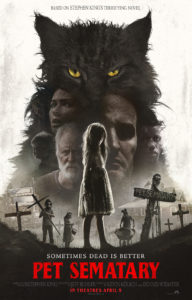 Filmic adaptations of books are tricky, and they will never be universally loved by all because of the various subjective attachments we have to the books. Yet, from the birth of cinema, that has never stopped Hollywood from making them. There are those book lovers who want accuracy and little diversion from the book’s plot in their adaptations. Then there are those people, like me, who are more concerned with capturing the tone and atmosphere of the book and are less concerned with hitting every narrative beat from the book. You will never hear the phrase “the book is always better than the movie” from the lips of this reviewer. I have seen plenty of cinematic adaptations that left the books in the dust. However, I’m more interested in those pairings where both the book and film are equally compelling and well-constructed. Something along the lines of the text and film versions of To Kill a Mockingbird. Both versions are exceptional in their own ways. Adaptations don’t need to be caught in a liminal space of either/or. Different mediums require different frameworks in which to make qualitative judgments.
Filmic adaptations of books are tricky, and they will never be universally loved by all because of the various subjective attachments we have to the books. Yet, from the birth of cinema, that has never stopped Hollywood from making them. There are those book lovers who want accuracy and little diversion from the book’s plot in their adaptations. Then there are those people, like me, who are more concerned with capturing the tone and atmosphere of the book and are less concerned with hitting every narrative beat from the book. You will never hear the phrase “the book is always better than the movie” from the lips of this reviewer. I have seen plenty of cinematic adaptations that left the books in the dust. However, I’m more interested in those pairings where both the book and film are equally compelling and well-constructed. Something along the lines of the text and film versions of To Kill a Mockingbird. Both versions are exceptional in their own ways. Adaptations don’t need to be caught in a liminal space of either/or. Different mediums require different frameworks in which to make qualitative judgments.
I’ve always found Stephen King stories to be compelling, yet hardly ever found his endings to be satisfying. His 1983 novel, Pet Sematary, is in the same boat though its ending is a little better than most. The new adaptation of the novel by directors Kevin Kölsch and Dennis Widmyer (Starry Eyes) is thematically compelling in its exploration of grief even in the midst of its flaws. The film currently sits more in the mixed category of both Rotten Tomatoes and Metacritic which is I think a fair assessment of the film as a whole. The 1989 adaptation of the novel sits lower on the scales of both film aggregators. Yet it will be interesting to see if a new generation comes to venerate this version as adults like many in my generation have come to venerate the original film version. Where it lacks in critical appraisal, it makes up for in the currency of nostalgia.
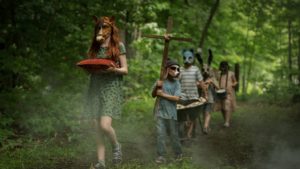 This is ultimately the difficulty of appraising a new version of a film that this reviewer grew up with and has built a portion of their identity around, no matter how small the portion is. I enjoyed this film. However, in the midst of the adoration and praise heaped upon the film during its SXSW Film Festival appearance, my enjoyment clearly did not reach those same ecstatic heights. I think the film, like the 1989 version, gets part of its source material right—and improves upon it—and other parts are severely lacking.
This is ultimately the difficulty of appraising a new version of a film that this reviewer grew up with and has built a portion of their identity around, no matter how small the portion is. I enjoyed this film. However, in the midst of the adoration and praise heaped upon the film during its SXSW Film Festival appearance, my enjoyment clearly did not reach those same ecstatic heights. I think the film, like the 1989 version, gets part of its source material right—and improves upon it—and other parts are severely lacking.
Where this adaptation shines is its willingness to go to the depths of the despairs of grief. The film’s ending is about as “feel good” as Darabont’s version of King’s “The Mist.” It has an almost inevitable air of tragedy from the first shot of the film. All the characters are haunted and wasted already. By what? We don’t know in every single case. Though the standout performance in the film is Amy Semeitz who plays the traumatized wife, Rachel. More than any other character, what haunted her was palpable and she wore it physically throughout the film. She also happens to be the only main character with a significant familial backstory—though not as successfully accomplished as the 1989 version.
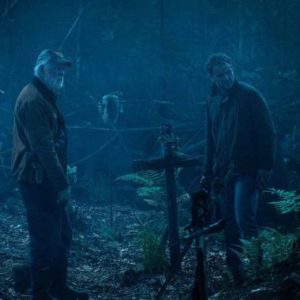 Thematically, this film nails the tone and atmosphere of King’s novel and attempts to grasp at some—perhaps too abstract—truths about death and the toll it takes on the survivors. Kölsch and Widmyer give just enough of their own unique flavor to the story and visuals to really bring the world of Pet Sematary to life. While accentuating these thoughts on death and grief, where the film falls a little flat is with how little it feels like we know the characters. Rachel is the only character given reason to be haunted from the beginning, but all of the characters felt like they were already on a downward trajectory and the audience’s job is to just witness the rocky bottom.
Thematically, this film nails the tone and atmosphere of King’s novel and attempts to grasp at some—perhaps too abstract—truths about death and the toll it takes on the survivors. Kölsch and Widmyer give just enough of their own unique flavor to the story and visuals to really bring the world of Pet Sematary to life. While accentuating these thoughts on death and grief, where the film falls a little flat is with how little it feels like we know the characters. Rachel is the only character given reason to be haunted from the beginning, but all of the characters felt like they were already on a downward trajectory and the audience’s job is to just witness the rocky bottom.
Jud Crandall—played by the great John Lithgow—was given very little characterization in this adaptation which within the scope of their thematic trajectory made some sense, but considering Jud is perhaps the second, if not the first, most important character in the book, the loss of his character arc weighed heavily in this film. The character work done in the 1989 film overshadows this version for the simple fact that they were given warmth and humanity before the descent began. Whenever the final act hit, we were invested in this family and their good ‘ol boy neighbor. Kölsch and Widmyer’s vision of the characters almost gave them a vibe of being foregone conclusions. A similar gripe I had with the characters in last year’s Hereditary. However, even when the characters felt cold and wasted from the beginning and the story might have felt a little rushed due to the mechanics of the film’s themes, the trip was entertaining, and its ending was effective in how dire it becomes.
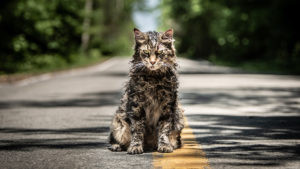
If this version and the 1989 version had a baby where the characters were given the fullness of the book and the first film with the tone, atmosphere, lived-in quality, and its ending—which I think is better than the book’s—that would be my ideal adaptation of Pet Sematary. As it stands both films remain quality viewings with their own strengths and weaknesses and.


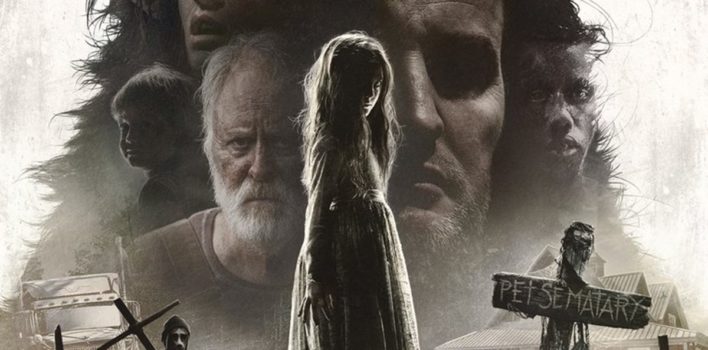
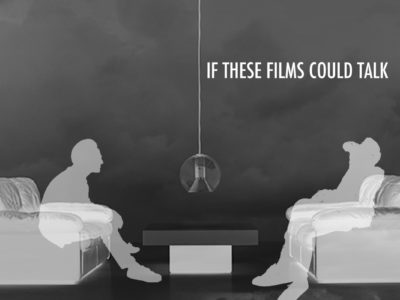
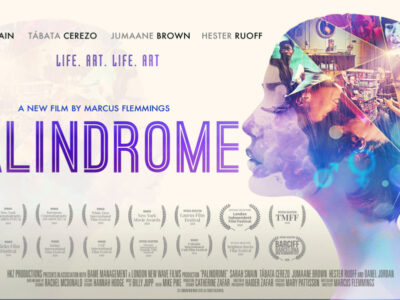
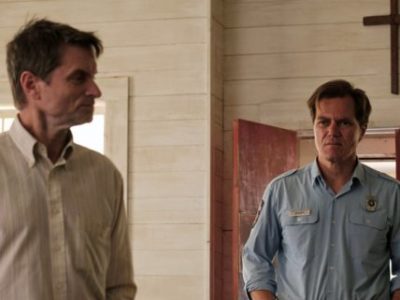


Pingback: Review| Under The Silver Lake | Reel World Theology